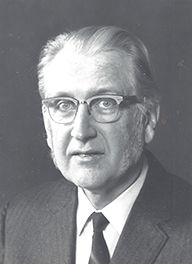A Tribute
If you are new to this website, you may be wondering why we would have a picture of an organ as the title page for a site dedicated to congregational singing. After all, stunning though it is, the picture looks back to a day when congregational singing was usually accompanied by an organ, but that's no longer true. Why not have a picture that speaks of congregational singing today? If you explore these pages, you will see that it is our conviction that the demise of the organ in the evangelical church is only a symptom of a more profound change in her worship, namely, the rejection of classic Christian hymnody in favor of contemporary Christian songs. Many believe that this is an innocent change that was needed if the church, and the gospel, are to be seen as relevant to contemporary culture. We hold a different view. In the two books and the podcasts mentioned in these pages, the consequences of that change are explored in the light of Scripture and recent scholarship in musicology and the psychology of music; it is far from an "innocent" change. So, one reason to use this picture is to alert the visitor to this site that we are, indeed, dedicated to the restoration of congregational singing through the use of classic Christian hymnody, including recent hymns of that genre.

But there's more to the story. As you can see in the lower-left corner of the organ picture, the organ is located in the Wesley Chapel of Houghton College. The professor of organ at Houghton College during the middle of the 20th century was Charles H. Finney, Ph.D., Fellow of the American Guild of Organists, a credential identifying him as one of the very finest organists in America. The Holtkamp organ is the realization, in 1962, of his dream that when a new chapel/auditorium was built it would include a pipe organ of great beauty, both in its musical characteristics and physical appearance. The Holtkamp organ is a reflection of his firm conviction that the worship of the Lord, and the preparation of those who will lead in that worship, demand our very best. It is probably the outstanding material legacy of his illustrious career.
However, we still haven't connected that picture with this website. Beyond Dr. Finney's material legacy is the fruit of his teaching career, borne out in the lives of scores and scores of his students, of whom I was one. Although I was only an organ minor, he allowed me to continue the study of organ throughout my college years, in spite of his heavy load of organ majors. His influence on my life was profound and enduring. It permeated our work with college students throughout my career in mathematics. His teaching prepared and motivated me to serve as a church organist during many years of college teaching. When that career ended, his influence remained, blossoming anew into research and writing in the field of hymnology.
I have often wished that I could discuss with him different aspects of the work, for his insights would have been both challenging and helpful, but my entrance into this new career was too long delayed. My expectation is that, while I would not be able to persuade him regarding every conclusion of my work, as set forth in my books and podcasts, he would agree with much of it. In a very real sense, most of what you will encounter in this website is traceable to those few years I had under his mentorship. It is a great honor to pay tribute to Charles H. Finney, and to express my thanksgiving to the Lord for the pivotal role that he played in my life.
David F. Neu
© 2022 David F. Neu